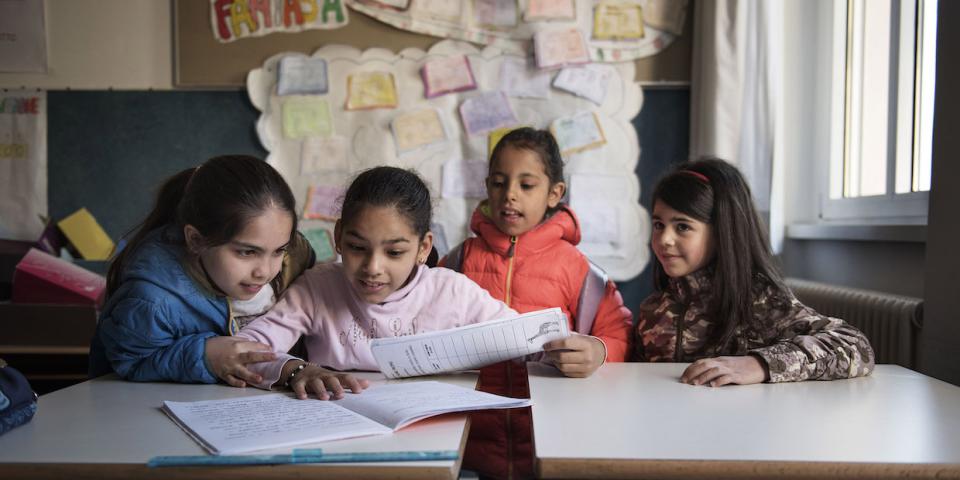An Italian primary or nursery school will require an array of educational materials to facilitate the development and learning of their students. Here are some of the materials could be needed: Textbooks/workbooks: These books are necessary for the teaching of the core subjects such as Italian language, mathematics and science.
Art and craft supplies: Students can use these supplies to make their own creative projects. These could include pencils, crayons or markers paints, brushes and paints.
Blocks, puzzles, or games that involve manipulatives are great for developing problem-solving and critical thinking abilities.
Technology for education Tablets and computers can be used as tools to help improve education and offer additional tools for students.
Visual aids like posters, charts and maps are a great way to aid students learn and remember important concepts.
Books: A range of books that are appropriate for children's age in Italian can help encourage reading and develop language skills.
Musical Instruments Musical Instruments: Using musical instruments such as xylophones or tambourines is a great way to teach the art of rhythm and appreciation for music.
Safety equipment is essential to protect the health and safety of both employees and students. This includes emergency kits for first aid, plan posters as well as fire extinguishers.
Sports equipment Make use of cones, balls and other equipment to play outside. play as well as physical education.
Italian primary schools and nurseries will need an an array of materials to stimulate and engage their students. Take a look at the top sostegno scuola primaria for more examples.

What Maths Teaching Aids And Educational Resources Are Suggested In Italian Nurseries?
Mathematical teaching materials and educational tools can help Italian preschoolers develop their spatial and numerical skills, as well as problem-solving. Some examples of recommended materials include: Counting manipulations Counting manipulatives, such as counting bears and blocks could help children improve their skills in counting along with fine motor skills and their hand-eye coordination.
Number cards and charts are a great idea as a method of introducing children to counting and numbers. These could be large, colorful cards or larger numbers for the wall.
Shape manipulatives can be used to teach children about shapes, their properties and to develop spatial reasoning.
Measuring Tools: Measuring instruments such as rulers (or measuring tapes) and scales (or scales), and measuring tapes are used to aid children in developing their mathematical vocabulary as well as learn about measurements and comparisons.
Simple puzzles and games: Simple games and puzzles like dominoes, matching games, and jigsaw puzzles can help children develop their problem-solving abilities, and also their attention to detail and concentration.
Technology-based tools: Tools such as tablets that have educational math applications and other games can be used to engage children, and provide additional resources to help them learn.
These materials should be used in a way that is developmentally appropriate and safe for infants and young children. Teachers and caregivers can utilize these materials to develop fun and interactive math games that encourage children's curiosity as well as enthusiasm for learning. Check out the recommended sostegno matematica for more tips.

What History-Related Teaching Materials Are Needed In Italian Nurseries?
Italian nurseries can provide children with history teaching resources that aid them in learning about their past, understand and appreciate the present as well as build a positive sense of self and belonging. Below are some examples that could be beneficial for teaching history: Age-appropriate materials such as texts that focus on historic events, cultures or even people can inspire children to take an interest in history.
Pictures and artifacts Artifacts and photographs from different time periods and different cultures can help children understand and appreciate historical events as well as methods of living.
Maps and time lines: Timelines and maps can help children to understand historical events in order and their connections.
Storytelling is a powerful method to introduce children in an engaging way, and with long-lasting memories to historical events or people is storytelling.
Dramatic play is a great opportunity for your child to recreate historical events as well as to discover more about them.
Field excursions. Children can benefit from excursions to historic sites as well as local museums. They'll get the chance to see the past firsthand and discover more about it.
It is crucial to ensure that the teaching materials you receive are age appropriate and culturally sensitive. Teachers and caregivers can utilize these materials to develop exciting and engaging history activities that promote children's curiosity and love of learning. See the most popular materiale didattico storia for website advice.
What Are The Most Effective Materials To Teach Geography In Italian Schools?
In Italian nurseries, geography-related teaching tools can be utilized to teach children about the world and different cultures. Examples of the resources that you can use for teaching geography are maps. Maps can be useful in teaching children about various regions and countries and also the places of landmarks and natural attributes.
Globes aid children in imagining the surface of the earth and can be used to educate about the continents as well as the oceans.
Pictures and Videos: Images and videos that show diverse cultures and locations are a great way to teach children about the diversity of the world. They can also discover about the different ways people live.
Books: Age-appropriate books that feature various cultures and places will help develop children's interest in geography.
Natural materials, including shells, plants, and rocks can be used to educate children about diverse ecosystems and the different environments.
Field trips: A field trips to local parks, museums, zoos and zoos can give children a hands-on experience and an chance to explore geography in a real-world context.
It is vital to choose materials for geography education that are appropriate for children of all ages as well as culturally sensitive. These materials let teachers and caregivers to design engaging and interactive activities that foster the love of learning among children and curiosity. Read the recommended materiale didattico geografia sostegno for blog recommendations.
